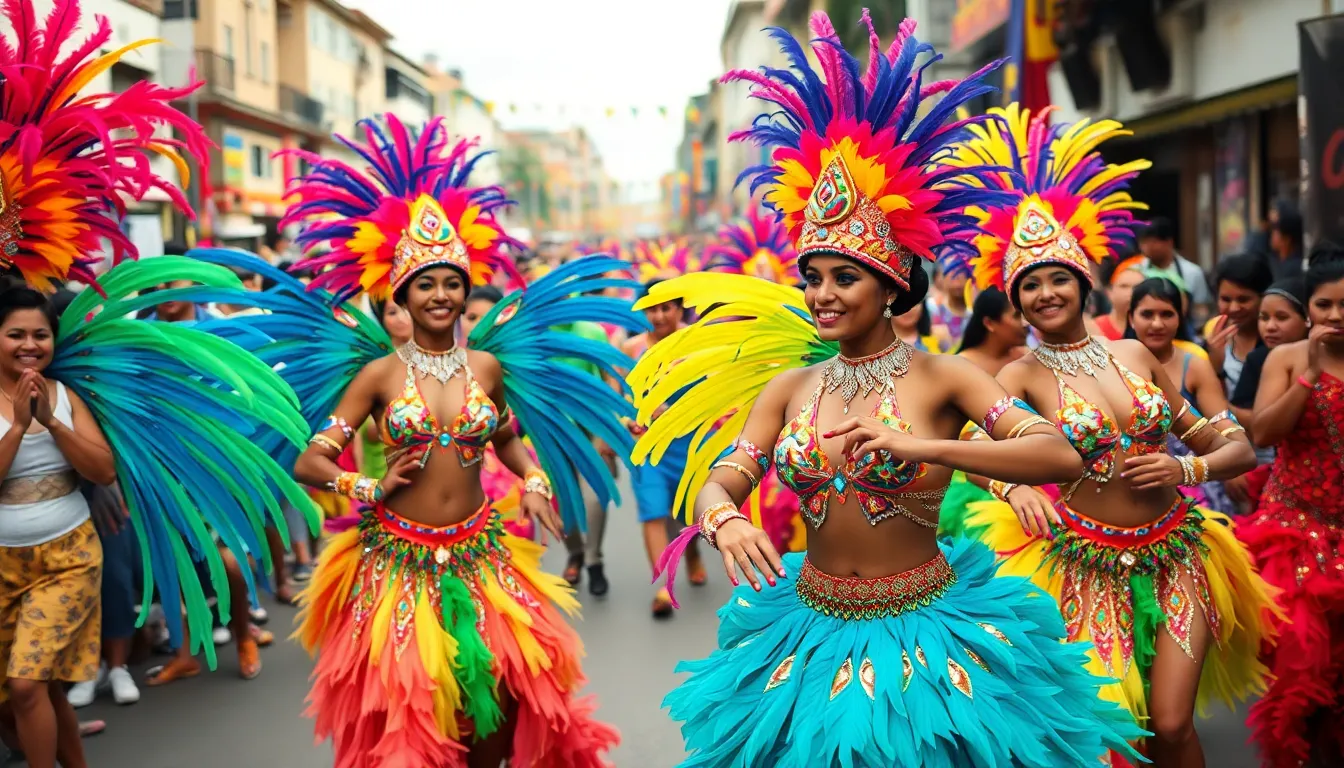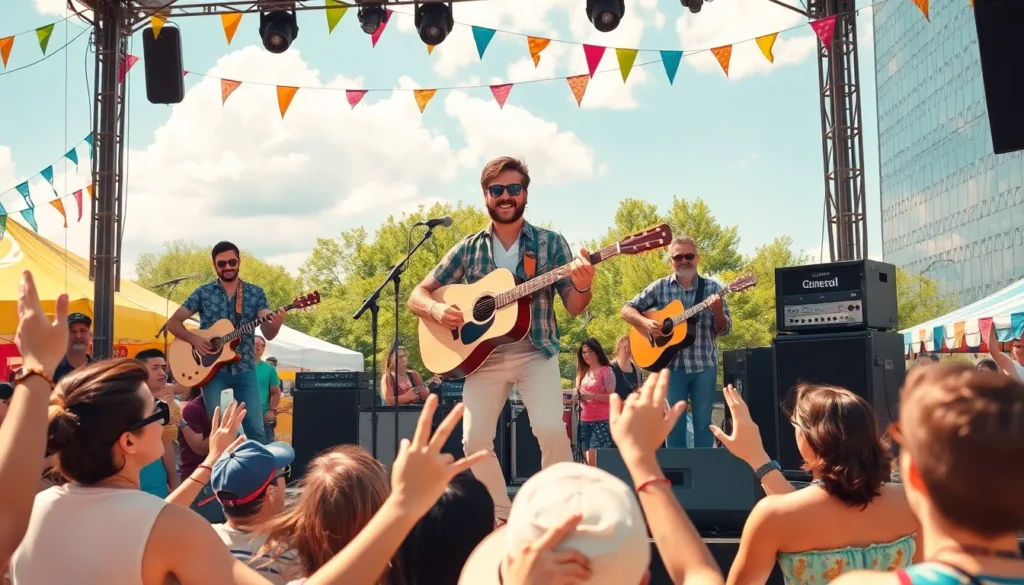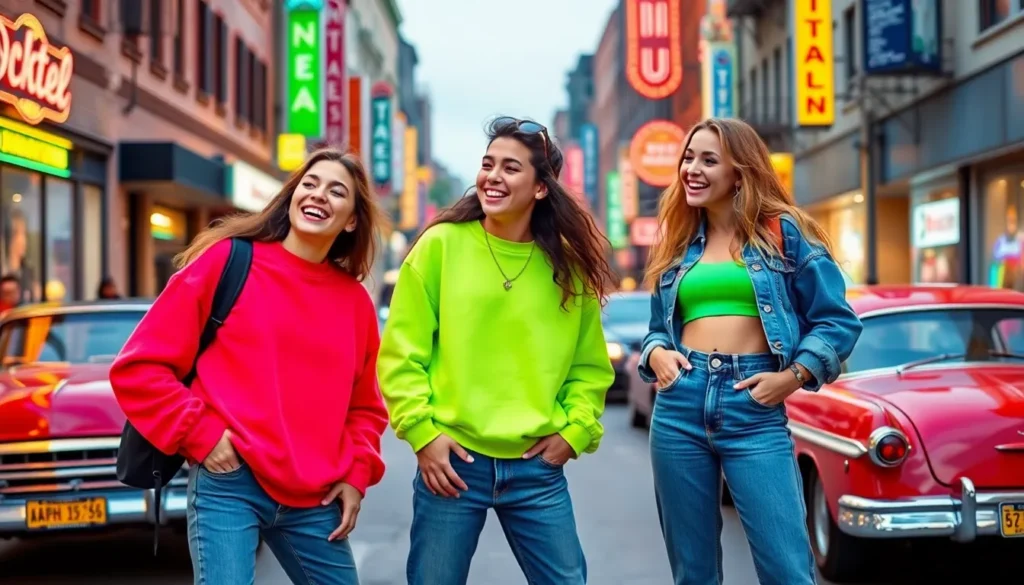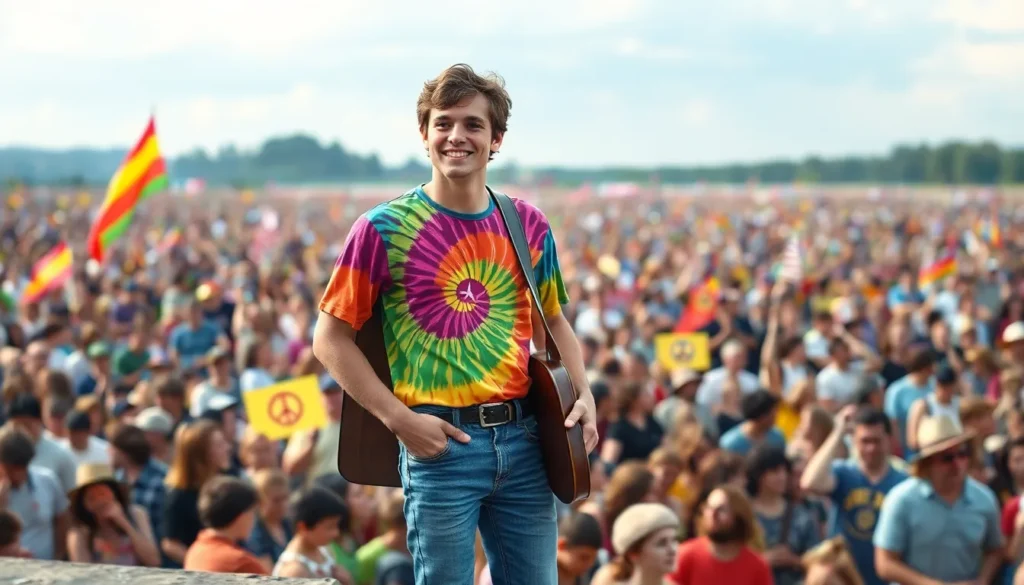Colombian culture is a vibrant tapestry woven from its rich history, diverse landscapes, and warm-hearted people. Picture this: a country where the aroma of freshly brewed coffee dances with the rhythms of cumbia and vallenato, and where every festival is a reason to celebrate life. From the colorful streets of Cartagena to the lush Amazon rainforest, Colombia offers a delightful blend of traditions that’ll make anyone want to pack their bags and join the fiesta.
Table of Contents
ToggleOverview of Colombian Culture and Traditions
Colombian culture thrives on a blend of Indigenous, African, and Spanish influences. This fusion creates a colorful tapestry evident in music, dance, food, and festivities. Festivals play a central role in Colombian life, with events like Barranquilla’s Carnival showcasing vibrant parades, traditional costumes, and infectious rhythms. Locals and visitors gather to celebrate each year, drawing international attention.
Cuisine reflects regional diversity, featuring dishes such as arepas, bandeja paisa, and sancocho. Street vendors across cities offer snacks like empanadas, inviting everyone to sample local flavors. Coffee holds a special place, with the Coffee Triangle known for producing some of the finest beans worldwide.
Music genres like cumbia, vallenato, and salsa resonate deeply within communities. Traditional instruments, including drums and flutes, accompany lively dances at social gatherings. The passion for music and dance unites Colombians, highlighting their celebratory spirit.
Artistry also flourishes through crafts and visual arts. Artisans create beautiful textiles, pottery, and jewelry, often with Indigenous techniques. In cities such as Bogotá and Medellín, street art murals tell stories of history and resistance.
Family bonds and community ties embody the essence of Colombian life. Respect for elders remains a guiding principle, while gatherings around shared meals strengthen relationships. Customs such as “Quinceañera” celebrations mark important milestones, blending cultural heritage with personal significance.
Religious traditions play a significant role in daily life. Catholicism influences many customs, from annual processions to Christmas celebrations. Spiritual practices often intermingle with Indigenous beliefs, enriching the religious fabric of the nation.
Cultural expressions in Colombia are varied and dynamic, fostering an identity that draws people into their vibrant world.
Major Influences on Colombian Culture
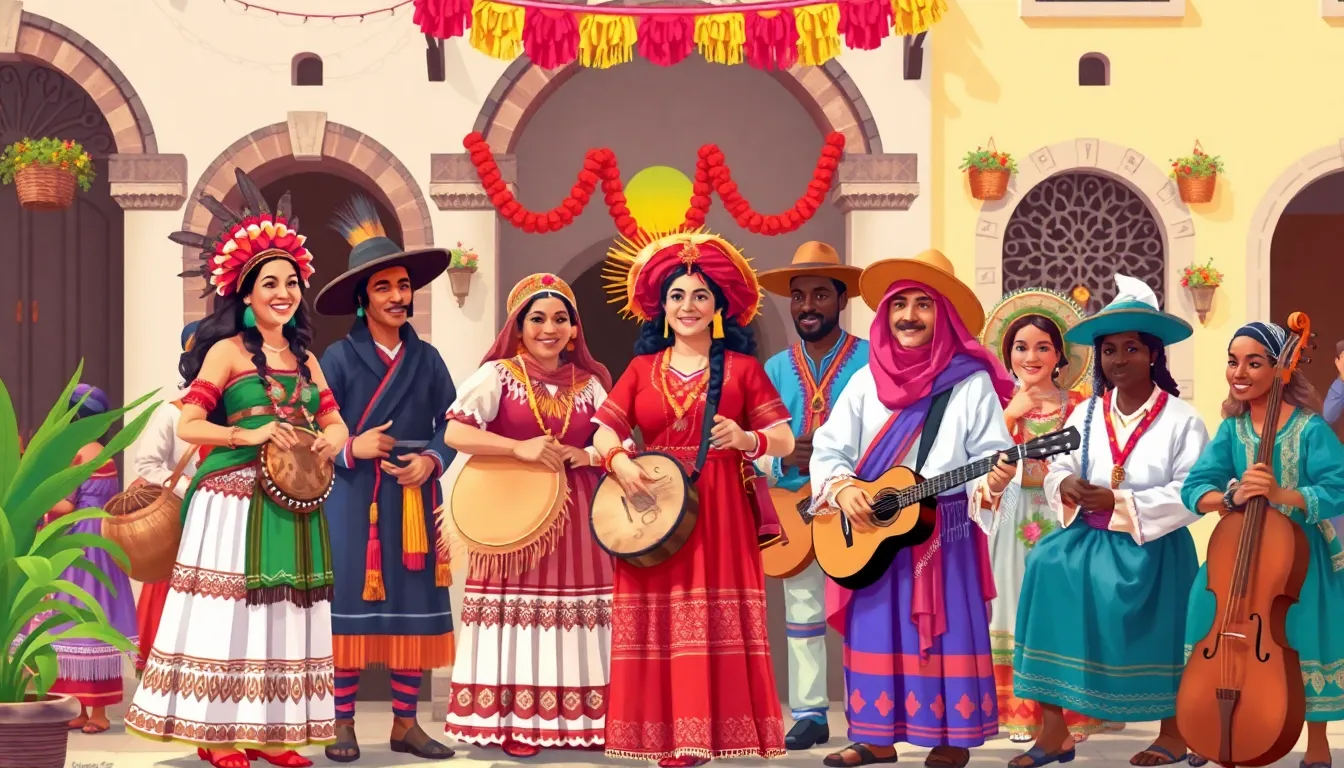
Colombian culture reflects diverse influences that shape its identity. Three key factors contribute significantly to this rich tapestry.
Indigenous Heritage
Indigenous heritage plays a vital role in Colombian culture. Numerous Indigenous groups inhabit the country, each with distinct languages and customs. Their contributions are evident in agricultural practices, traditional crafts, and ceremonies. Quinoa and potatoes, staples in Colombian cuisine, trace back to these groups. Celebrations like the “Fiesta de San Pacho” showcase Indigenous spirituality blended with modern elements, preserving ancient traditions.
Spanish Colonization
Spanish colonization significantly reshaped Colombia’s landscape and social structures. From the 16th century, Spanish settlers introduced Catholicism, language, and new agricultural techniques. Cities like Cartagena and Bogotá exhibit Spanish colonial architecture. Culinary influences include dishes like empanadas and sancocho, reflecting this blending. Festivals, such as Semana Santa, highlight Catholic traditions and showcase the influence of Spanish culture.
African Roots
African roots deeply enrich Colombian cultural expressions. Enslaved Africans brought to Colombia contributed to music and dance, notably with genres like cumbia and salsa. Their rhythms and instruments form the backbone of many celebrations. Festivals like the “Festival de la Leyenda Vallenata” celebrate this heritage through vibrant performances. Additionally, Black communities maintain traditions that reflect resilience and vibrancy, evident in folklore and oral histories that continue to resonate.
Celebrations and Festivals
Colombia hosts a myriad of festivals that showcase its vibrant culture and rich traditions.
Carnival of Barranquilla
Carnival of Barranquilla stands as one of Colombia’s most iconic celebrations. With origins dating back to the early 20th century, the carnival serves as a display of cultural fusion. During this lively event, participants dress in colorful costumes and perform traditional dances, including cumbia and mapalé. Over four days, parades fill the streets with music and dance, captivating both participants and spectators alike. This festival draws thousands of visitors, making it a significant attractor for tourism. Artists and musicians come together, highlighting the strength of community and artistic expression.
Feria de las Flores
Feria de las Flores, held annually in Medellín, celebrates the beauty of nature and Colombian culture. Each August, the city transforms into a floral paradise, showcasing the country’s stunning flora. Events include elaborate flower parades, traditional music performances, and art exhibitions. Local farmers display vibrant flower arrangements, emphasizing the region’s significance in the floral industry. Cultural traditions intertwine with modern festivities, showcasing the heritage of Antioquia. Community participation remains vital, as families and friends unite to honor their cultural roots and the environment. This festival reflects resilience, beauty, and the joy of Colombian life.
Traditional Music and Dance
Colombian culture is deeply rich in traditional music and dance, showcasing a tapestry of rhythms that reflect its diverse heritage. Cumbia and vallenato stand out as two prominent genres, each with unique characteristics and histories.
Cumbia
Cumbia originated from the coastal regions of Colombia, blending African, Indigenous, and Spanish musical elements. This genre features lively percussion instruments like drums and maracas, creating an infectious beat. Dancers often perform cumbia in a circular formation, allowing for an engaging and interactive atmosphere. The genre’s catchy melodies invite participation, making it a staple at festivals and social gatherings. Events such as Barranquilla’s Carnival highlight cumbia’s vibrancy, uniting communities through its festive spirit. The influence of cumbia extends beyond borders, inspiring various adaptations in Latin America and beyond.
Vallenato
Vallenato hails from the Caribbean coast, primarily the Valle de Cuaca region, and reflects the stories and traditions of Colombian life. Characterized by its use of the accordion, caja, and guacharaca, vallenato resonates with both deep passion and lively energy. Themes often revolve around love, nature, and local folklore, engaging listeners with relatable narratives. Festivals like the Festival de la Leyenda Vallenata celebrate this genre, spotlighting talented musicians and storytellers. Popular vallenato artists, such as Carlos Vives and Jorge Celedón, have propelled the genre onto international stages, furthering its appeal. Through its rich melodies, vallenato remains an essential part of Colombia’s cultural identity.
Colombian Cuisine
Colombian cuisine reflects the country’s diverse regions, showcasing a blend of flavors and traditions. It celebrates an array of ingredients and cooking methods, anchoring the cultural identity of Colombia.
Popular Dishes
Arepas, one of Colombia’s most iconic foods, commonly appears at breakfast, lunch, and dinner. Bandeja paisa features a hearty mix of beans, rice, ground meat, fried plantains, and avocados. Sancocho, a traditional soup, combines chicken or beef and root vegetables in a savory broth. Empanadas are popular street food, often filled with meat, cheese, or vegetables. Ajiaco, a chicken soup from Bogotá, draws on potatoes and corn to enrich its flavor. Each dish provides insight into regional variations, highlighting local tastes and customs.
Unique Ingredients
Corn serves as a staple in Colombian cooking, contributing to dishes like arepas and tamales. Plantains find their way into both savory and sweet meals, showcasing versatility in usage. Fresh fruits such as guava, passion fruit, and lulo create vibrant juices and desserts. Coffee, a major export, enhances many recipes while being celebrated as a national treasure. Herbs and spices like cilantro and ají elevate the flavors of Colombian dishes, making them memorable. A diverse range of ingredients reflects the culinary heritage, merging Indigenous, African, and Spanish influences seamlessly.
Clothing and Traditional Attire
Colombian clothing expresses the country’s rich cultural heritage, showcasing a mix of Indigenous, African, and Spanish influences. Traditional attire varies among regions, reflecting the diversity of Colombia’s population and customs.
Typical Clothing Styles
Typical clothing styles feature garments like the “sombrero vueltiao,” a hat woven from caña fleha, prominent in the Caribbean region. “Polleras,” colorful skirts worn during festivals, highlight the vibrancy of coastal cultures. “Ruana,” a wool poncho, serves as functional attire in Andean regions, providing warmth against the cold. In urban areas, men and women wear modern outfits, yet traditional elements often blend seamlessly into daily attire. Garments frequently represent local identities and foster connections to cultural roots.
Significance of Color and Design
Color and design in Colombian clothing convey deep cultural meanings. Bright colors symbolize joy, celebration, and the beauty of the landscape. Traditional patterns often incorporate Indigenous motifs, representing local history and traditions. Each region presents its unique designs, emphasizing the cultural identity of its people. Additionally, festival costumes often feature elaborate embroidery, showcasing artisans’ skills and craftsmanship. Overall, these elements work together to create clothing that reflects Colombia’s diverse cultural tapestry.
Conclusion
Colombian culture is a vibrant celebration of history and diversity. Its rich traditions reflect a unique blend of Indigenous, African, and Spanish influences that shape daily life and festivities.
From the lively rhythms of cumbia and vallenato to the mouthwatering flavors of regional cuisine, every aspect of Colombian culture invites exploration. Festivals like Barranquilla’s Carnival and the Feria de las Flores showcase the community spirit and artistic expression that define this nation.
Colombia’s cultural tapestry is not just a reflection of its past but a living, breathing entity that continues to evolve. Embracing its heritage while welcoming new influences, Colombia stands as a testament to the power of cultural resilience and joy.

